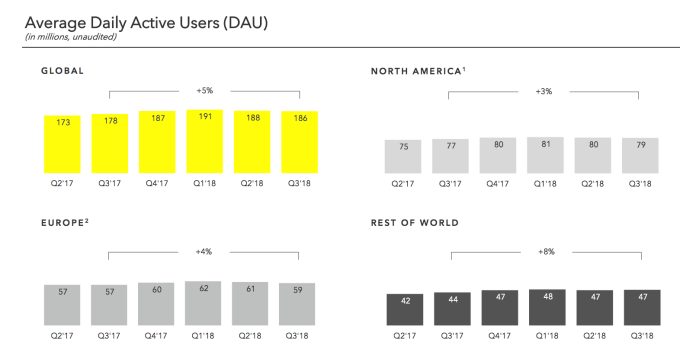In the wake of a fairly catastrophic behind the scenes glimpse into Facebook’s high-level decision making, one question remains: Who brought a controversial Republican opposition research firm into the fold?
In a long call with reporters on Thursday, Mark Zuckerberg denied any knowledge of his company’s own dealings with Definers Public Affairs, the firm in question. Definers Public Affairs is “an outfit of elite GOP operatives” specializing in opposition research — a cutthroat dark art that’s the norm in politics but anomalous in virtue-conscious Silicon Valley.
Founded by a Republican campaign manager lauded for his dirt-digging prowess, Definers is far from a normal, politically neutral contractor. For one, the company shares staff and office space with America Rising, its oppo research-focused PAC, as well as a right-leaning news aggregator called NTK Network that surfaces stories placed by the company’s other wings.
In one effort, Definers pushed back against Facebook critics with a narrative that linked the social network’s detractors to George Soros, the billionaire Democrat and frequent target of anti-semitic conspiracy theories.
Zuckerberg did not mince words about his attitude toward his company’s relationship with Definers. “I learned about this yesterday. In general, this kind of firm might be normal in Washington…. but it’s not the kind of firm that Facebook should be working with,” Zuckerberg said on Thursday, noting that Facebook had cut ties with the firm.
In her statement late on Thursday, Sheryl Sandberg denied any knowledge of the firm too, stating that she didn’t know about the work they were doing for Facebook but “should have.” In the predictably flimsy and characteristically late response, Sandberg denounced conspiracy theories targeting Soros as “abhorrent.”
While the company still hasn’t explained how Facebook tapped the Republican-led firm for crisis communications, there are a few educated guesses to be made.
(TechCrunch contacted Facebook with questions about the scope of the firm’s work and how the relationship began and will update this story if we learn more.)
Other ties to the oppo research group
After denying any knowledge of Definers — curious given that Facebook itself stated that its “relationship with Definers was well known by the media” — Zuckerberg landed on an explanation: “Someone on our comms team must have hired them.” While this passing of the buck is questionable, it’s also probably true.
In fact, a noteworthy chunk of Facebook’s communications team has direct ties to Definers founder Matt Rhoades, who formerly ran Mitt Romney’s campaign bid for president. Facebook’s current Director of Policy Communications Andrea Saul served as the National Press Secretary for the Romney for President campaign from early 2011 to November 2012 under Rhoades. After the Romney campaign dried up, Saul went to work doing PR for Sheryl Sandberg’s nonprofit LeanIn.org for two years and found her way to Facebook in mid-2016.
Jackie Rooney, a Facebook spokesperson and member of Facebook’s Corporate and Internal Communications team, served on the Romney campaign as Chief of Staff to the campaign manager, Matt Rhoades. Rooney has been with Facebook for almost six years. Carolyn Glanville of Facebook’s Corporate Communications team, a relatively new hire at Facebook, also served on the Romney campaign as Deputy Communications Director.
A handful of other Facebook product team members also worked on the Romney campaign though were less directly connected to Rhoades. Romney has fundraised for Definers sister firm, the America Rising PAC, as recently as 2015. America Rising’s stated goal is to serve as “an independent organization that can drive the toughest negative narrative against Democrats.”
Beyond Facebook’s comms connections, another educated guess at the Definers culprit points to Joel Kaplan, Facebook’s deeply influential longtime chief lobbyist.
Kaplan, Facebook’s Vice President of Global Public Policy, served in the George W. Bush White House from 2001 until 2009, first as the Special Assistant to the President for Policy and later as Deputy Chief of Staff for Policy where he “integrated the execution of legislative, communications, and external outreach and policy strategies.” Both Rhoades and Pounder — Definers founder and President, respectively — worked on the Bush campaign in 2004 and went on to serve in the White House after the Bush campaign prevailed, developing some renown for their opposition research work.
“We distill and strategically deploy public information to build and influence media narratives, move public opinion and provide powerful ammunition for your public relations and government affairs efforts,” the group more commonly called Definers boasts. “Nobody else can say the same.”
Chain of Command
Having attended Harvard together, Kaplan and Sandberg are close. At Facebook, Kaplan reported to Communications and Public Policy VP Elliot Schrage before Schrage’s departure announced this June. Schrage reported to Sandberg, though Kaplan was often looped into high level decision making as well as part of “an elite group” of senior executives at the company.
According to the New York Times report, Facebook’s involvement with Definers began prior to October 2017, likely after the group set up shop in Silicon Valley a few months prior. While those conversations at times addressed content controversies, it’s hard to imagine that they wouldn’t also shape overarching communications strategy in the midst of ongoing crises as well.
After Facebook’s Cambridge Analytica scandal in March, Kaplan urged Sandberg to ramp up the lobbying efforts of fellow Bush administration alum Kevin Martin. Around the same time Facebook again “expanded” its work with Definers, switching to a more offensive strategy aligned with the on-the-attack style that the firm specializes in.
Like any decent political operative, Kaplan usually shirks the limelight — but not lately. Kaplan made headlines recently by appearing in the supporters section for Supreme Court Brett Kavanaugh during the nationally televised hearing. A week later, Kaplan and his wife hosted a celebration party for those who had worked on the Kavanaugh nomination that was attended by the nominee himself.
If there was a time when Facebook’s relationship with Republicans was in fact strained, Silicon Valley’s premier equivocator has swung fully the other way with help from Kaplan. While left-leaning Silicon Valley might balk, his deep Republican establishment ties remain more of an asset than a liability to Facebook and have allowed him to serve effectively in his role for more than 10 years at the company. Facebook continues to scratch its East Coast lobbying itch while giving lip service to West Coast political ideals and generally telling everyone what they want to hear.
The buck stops where
One of tech’s biggest companies bringing a Republican political oppo outfit in to mitigate a relentless series of PR catastrophes is noteworthy in its own right, but Zuckerberg’s ignorance of Facebook’s dalliance with Definers makes the whole thing even more odd. Who knew what and when? Did Sheryl Sandberg really not know that the company was contracting with the group? Given her closeness to Kaplan, Schrage, and her extreme awareness of Facebook’s image, cultivated via the comms team, is that even possible?
As Facebook’s two top executives theatrically recoil in horror at their own company’s foray into the political dark arts, they might be surprised to learn that the oppo is in fact coming from inside the house.
More likely, they wouldn’t be.

from Social – TechCrunch https://ift.tt/eA8V8J Facebook has other ties to Definers, the GOP-led opposition research group Taylor Hatmaker https://ift.tt/2BajJXH
via
IFTTT































